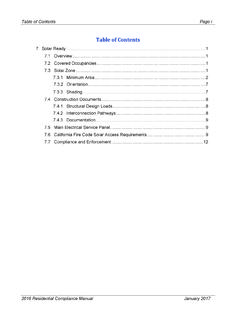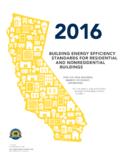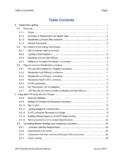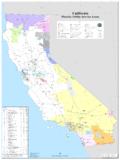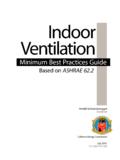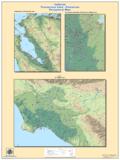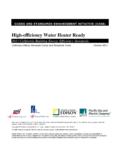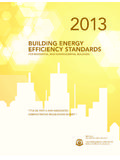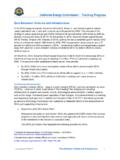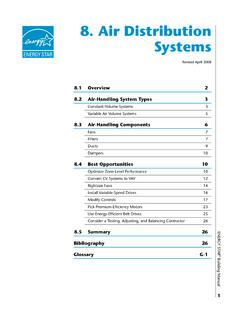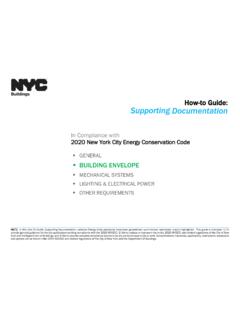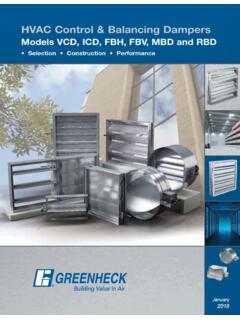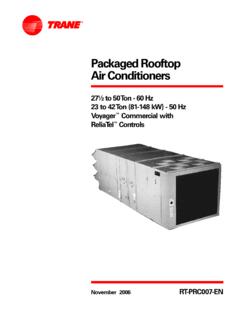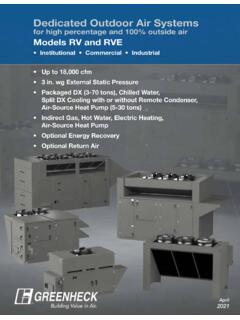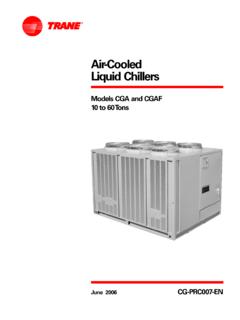Transcription of 2019 Energy Code Nonresidential Envelope
1 2019 Energy CodeNonresidential EnvelopeCalifornia Energy Commission, Efficiency DivisionAmie BrousseauJune 2020 Goals for this Training2019 Energy Code Envelope requirementsoNonresidential buildingsoAdditions and alterations Simplify compliance and enforcement oPlan reviewoField inspection2019 Energy Code BasicsNonresidentialEnergy Code HistoryThe Warren Alquist Act established the California Energy Commission (CEC) in 1974 Authority to develop and maintain building Energy Efficiency Standards Requires the CEC to update periodically, usually every three years Requires the Energy Code to be cost-effective over the economic life of the buildingNonresidential BuildingsNonresidential, high-rise residential, hotel and motel buildings All buildings in California building Code (CBC)
2 Occupancies of group A, B, E, F, H, I, M, R, S, U 2019 added I-1 and I-2 Hotels and motels High-rise residential buildings oOfficesoRetail and wholesale storesoRestaurantsoAssembly and conference areasoIndustrial work buildingsoCommercial or industrial storageoSchools and churchesoTheatersoHotels and motelsoHealthcare facilitiesoApartment and multi-family buildings, four or more storiesoLong-term care facilities, four or more stories2019 Energy SavingsNonresidential, high-rise residential, hotel and motels 30% more efficient than 2016 Standards Savings due mainly to lighting upgrades LED lighting first year savings of 480 GWhEnergy Code RequirementsMandatory measures Minimum efficiency requirements must always be met Can nevertrade offPrescriptive measures Predefined efficiency requirements May supersede mandatory measures Different requirements for newly constructed buildings, additions, and alterationsCompliance ApproachesPrescriptive Approach Simple approach.
3 No trade-offs Mostly used for alterations Standard building baselinePerformance Approach Most flexible approach, allows for trade-offs Must meet all mandatory requirements Requires the use of CEC-approved software Proposed design standard design Mostly used for newly constructed buildings and additionsCertificate of ComplianceNonresidentialCertificate of Compliance - NRCCs Dynamic fillable form Demonstrates compliance at design phase Completed by designer, architect, Energy consultant, engineer, etc.
4 Submit with permit application, include with plans Plans examiner verifies NRCC matches specs on plans2019 NRCC Dynamic FormsNonresidential Certificate of Compliance - NRCCs Auto-fill fields Automatic calculations Drop down selections Interactive instructions Add and delete table rows Condensed 47 forms into 10 Certificate of InstallationNonresidentialCertificate of Installation - NRCIs Completed by installing contractor Confirms compliance at installation Left on-site for building inspector Identifies construction documents
5 That show Energy features were installed as proposed in the certificate of compliance Inspector verifies documented efficiency and components match installed equipment and systemsCertificate of AcceptanceNonresidentialCertificate of Acceptance - NRCAs Completed by field technician Confirms compliance with acceptance requirements in Reference Nonresidential Appendix NA7 Left on-site for building inspector Identifies construction documents that show Energy features were installed as proposed in the certificate of compliance Inspector verifies documented efficiency and components match installed equipment and systemsEnvelope DefinedThe building Envelope is the exterior components, including demising partitions, which enclose conditioned space, separating it from unconditioned space or outside Envelope RequirementsNonresidentialTitle 24, Part 1 Administrative CodeTitle 24.
6 Part 6 Energy CodeTitle 24 California building CodePart 1 - Administrative Code Chapter 10 Sections 10-101 10-115 Administrative requirementsPart 6 - Energy Code Subchapters 1 - 9 Sections - Technical requirementsPart 1 Administrative CodeAll Buildings 10-101 to 10-115 Regulations, definitions, permitting, compliance, enforcement, acceptance testing providers, local ordinances, interpretations, certification, labeling for fenestration and roofs, outdoor lighting zones, community shared solar.
7 And battery storageRelevant sections 10-111 Fenestration and door labels 10-112 Default tables 10-113 Roofing productsPart 6 Energy CodeAll Buildings - Table enveloperelevant sections Definitions - All buildings Mandatory measures Prescriptive requirements Additions and alterationsMandatory RequirementsAll Buildings to Regulates the manufacture and installation of components and systems for all buildingsRelevant sections Envelope Air leakage Insulation and roofingMandatory RequirementsNonresidential to Covers requirements for design and installation of building envelopes, ventilation, space conditioning, service water heating systems and equipment, covered processesRelevant sections InsulationPerformance and Prescriptive RequirementsNonresidential to and prescriptive compliance approachesRelevant sections Prescriptive building envelopeAdditions, Alterations, RepairsNonresidential for additions, alterations.
8 And repairsRelevant sections (a) Additions (b) AlterationsFenestration and Exterior Door RequirementsNonresidentialAdministrative 10-111, 10-112 Mandatory , (a), (c), (d) Additions and Alterations (a), (b) Fenestration DefinitionsFenestration- a transparent or translucent material plus any sash, frame, mullions, and dividersU-factor- a measure of the heat transmission through the fenestrationSolar Heat Gain Coefficient (SHGC) - the fraction of solar radiation entering the space through the fenestration which is released as heat into the spaceVisible Transmittance (VT) - the ratio of visible light that is transmitted through the fenestration, higher is betterLower U-factor and SHGC are more efficientFenestration DefinitionsThree types of fenestration Site-Built: plant-fabricated and field-assembledoStorefront or curtain wall systemoReferred to as knock-down Field-Fabricated.
9 Field-madeoCustom made at site for a specific application Manufactured: pre-assembled glazing and frameoMost commonly used in residentialFenestration and Exterior DoorsAdministrative Regulations All Buildings 10-111, 10-112 Labeling and Certification Requirements 10-111 National Fenestration Rating Council (NFRC) is designated to administer certification program Temporary labelsoNFRC manufactured window and door labelsoEnergy Commission default table values Label certificatesoNFRC Component Modeling Approach (CMA)
10 ONA6 Alternate Default Fenestration Procedure (NRCC-ENV-05) Permanent labelsDefault Tables 10-112 Energy Commission calculates, maintains, and revisesFenestration Temporary LabelsNFRC CECNFRC CMA Label CertificateFenestration and Exterior Door Mandatory RequirementsAll Buildings , Exterior doors require U-factor ratingoNFRCoDoors with 25% or more glazing treated as fenestration Reduced NA6 to 200 square feet Updated definitionsoFenestration ProductoClerestoryoDooroGlazed DooroOverhang ProjectionoOverhang RiseFenestration and Exterior Door Mandatory RequirementsAll Buildings and site-built Certified by NFRC to meet requirements for air leakage, U-factor, SHGC.
